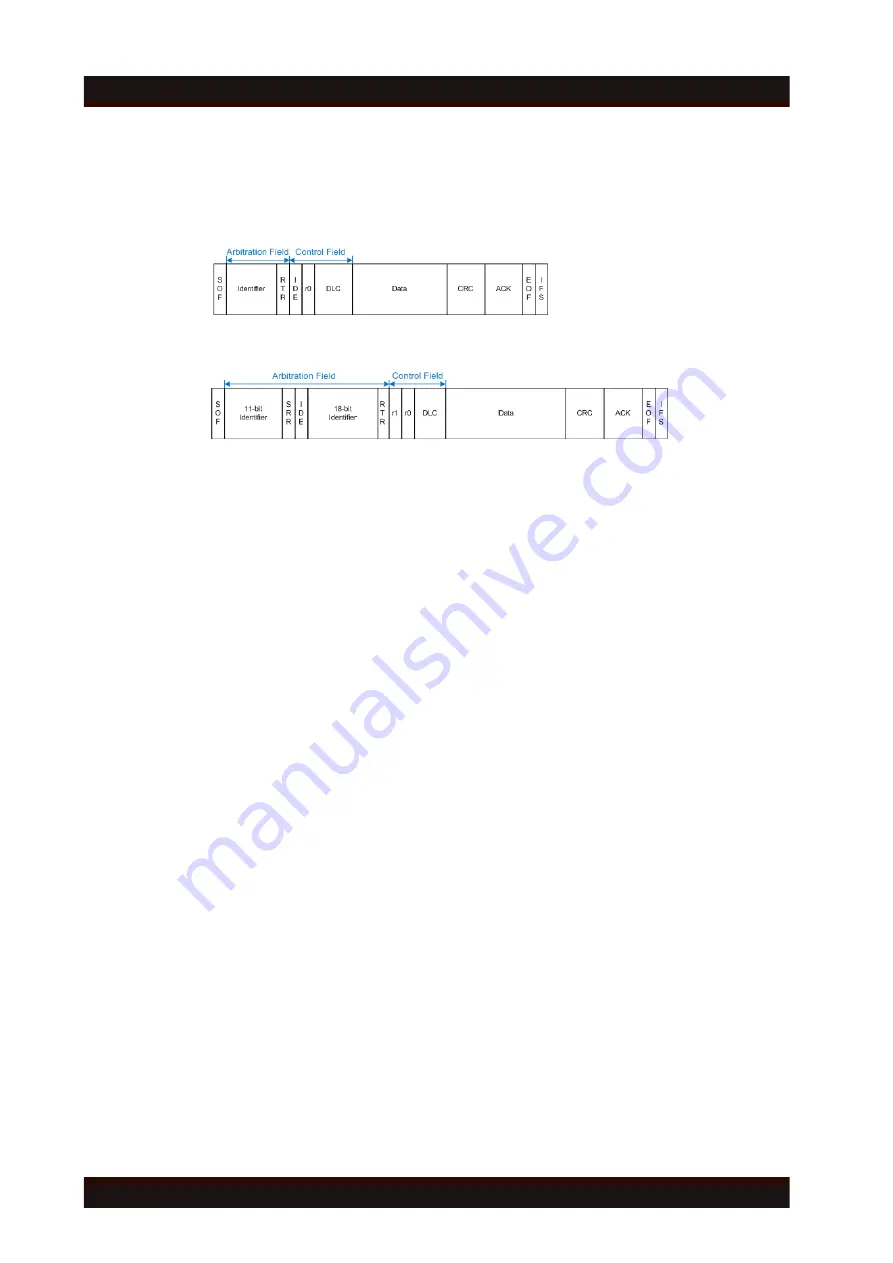
Serial Bus Analysis
R&S
®
RTM3000
281
User Manual 1335.9090.02 ─ 08
CAN data message format
The CAN protocol defines two formats for the data frame: the base frame format and
the extended frame format. The data frames are built as follows:
Figure 12-21: CAN basic frame
Figure 12-22: CAN extended frame
The following fields, compose the base/extended frame format:
●
SOF
: start of frame. 1 dominant bit that marks the beginning of the message.
●
Identifier
: 11/18-bit identifier. Contains information about the priority of the mes-
sage. CAN base frames have an 11-bit identifier while CAN extended frames have
a total of 29 bits identifier.
●
RTR
: remote transmission request bit. Differentiates between base and extended
frames. It is dominant for base data frames and recessive for extended data
frames.
●
SRR
: substitute remote request. Only present in extended CAN frames at the posi-
tion of the RTR bit in base frames.
●
IDE
: identifier extension bit. It helps to distinguish between a base and extended
data frame. It is dominant for data frames and recessive for remote frames
●
r0/r1
: reserved bits for possible future use.
●
DLC
: data length code. Defines how many bytes of data follow.
●
Data
: up to 8 bytes of data can be transmitted for CAN.
●
CRC
: cyclic redundancy check. Checks the integrity of the frame contents.
●
ACK
: acknowledgement. This is a recessive bit that is overwritten by the node, if
the message was transmitted correctly.
●
EOF
: end-of-frame: marks the end of the message.
●
IFS
: interframe space. Separates a data or remote frame from the preceding
frames.
12.5.2
CAN Configuration
The correct setup of the protocol parameters and the threshold is the condition for
decoding the signal.
CAN (Option R&S
RTM-K3)
www.allice.de
Allice Messtechnik GmbH






























